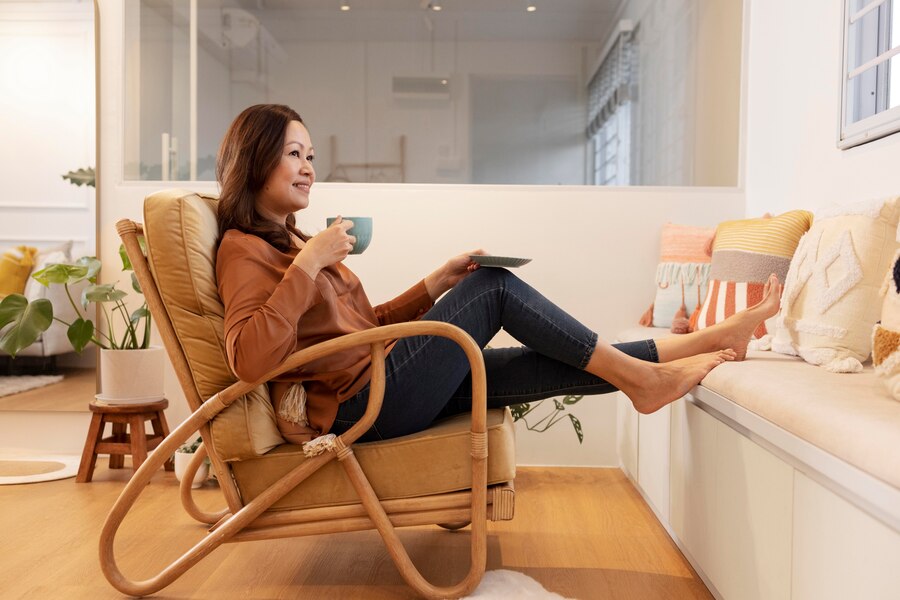Creating a comfortable indoor environment is about more than just aesthetics. It’s about crafting a sanctuary where you can unwind, recharge, and feel truly at ease. From choosing the right furniture to setting the perfect lighting, there are plenty of ways to elevate your living space into a haven of relaxation. Here are some practical tips to help you achieve ultimate indoor comfort.
1. Choose the Right Furniture
Comfort starts with your choice of furniture. Opt for pieces that are not only stylish but also ergonomic and functional. Sofas and chairs with ample cushioning, soft fabrics, and supportive designs can make a world of difference. Don’t forget about multipurpose furniture, such as ottomans with storage or foldable desks, which can help keep your space uncluttered and organized.
Additionally, consider investing in high-quality mattresses and bedding. Your bedroom is your ultimate retreat, and a good night’s sleep is essential for relaxation. Look for memory foam or hybrid mattresses that suit your sleeping preferences and pair them with soft, breathable linens.
2. Set the Mood with Lighting
Lighting plays a crucial role in creating a comfortable ambiance. Harsh, overhead lighting can feel cold and clinical, so aim for a layered lighting setup. Incorporate floor lamps, table lamps, and wall sconces to provide warm, diffused light. Dimmer switches are also a fantastic way to adjust the brightness to suit your mood, whether you’re reading, working, or winding down in the evening.
Natural light is equally important. Maximize sunlight during the day by keeping windows clear and using light, airy curtains. If privacy is a concern, opt for sheer blinds that let in sunlight while maintaining a sense of seclusion.
3. Incorporate Cozy Textures
Textures have a significant impact on how comfortable a space feels. Add softness with plush rugs, throw blankets, and an assortment of cushions. Mix and match materials like velvet, wool, and faux fur to create a tactile experience that invites you to relax.
Layering is key here—place a soft rug over hardwood floors, drape a throw blanket over a sofa, and scatter pillows in various shapes and sizes. These small details not only enhance comfort but also add depth and character to your interiors.
4. Focus on Temperature Control
Temperature plays a crucial role in maintaining a comfortable indoor environment. To ensure consistent temperatures while saving energy, consider investing in a smart thermostat. Additionally, using fans, humidifiers, or dehumidifiers can help regulate air quality and humidity, creating the perfect atmosphere.
In Hawaii, where temperatures can vary, it’s essential to keep your cooling system in top condition. Regular heat pump repair and maintenance are key to ensuring your system runs efficiently, especially during the warmer months. For colder weather, area heaters or electric blankets can provide extra warmth and coziness. Meanwhile, ceiling fans and blackout curtains are effective tools for managing temperature year-round, ensuring your home remains comfortable no matter the season.
5. Declutter and Organize
A clutter-free space is inherently more relaxing. Start by decluttering your rooms and only keeping items that bring joy or serve a purpose. Storage solutions, such as baskets, shelves, and hidden compartments, can help keep your belongings neatly tucked away.
Organize items by category and designate specific zones for activities like reading, working, or lounging. A tidy, organized space allows your mind to relax and focus, rather than feeling overwhelmed by visual chaos.
6. Use Calming Colors
The colors you choose for your walls, furniture, and décor have a direct impact on your mood. Neutral tones like beige, gray, and white create a calm and serene atmosphere. Soft pastels, such as blush pink, sage green, and sky blue, also evoke relaxation and tranquility.
If you prefer bolder colors, incorporate them as accents in throw pillows, artwork, or rugs rather than using them for large surfaces. This way, you can enjoy vibrant touches without overwhelming the space.
7. Enhance Air Quality
Clean, fresh air is essential for comfort and well-being. Regularly clean your HVAC filters and consider investing in an air purifier, especially if you have pets or live in an area with high levels of pollution. Houseplants are another great option—they not only purify the air but also add natural beauty to your home.
Low-maintenance plants like snake plants, pothos, and peace lilies are excellent choices for improving indoor air quality. Just be sure to choose pet-safe plants if you have furry friends at home.
8. Incorporate Personal Touches
Adding personal touches makes a house feel like a home. Display family photos, cherished artwork, or souvenirs from your travels to infuse your space with personality and meaning. These items not only make you feel more connected to your environment but also evoke positive memories and emotions.
Candles, diffusers, or essential oils can also enhance the sensory experience in your home. Scents like lavender, vanilla, and eucalyptus are particularly calming and can help you relax after a long day.
9. Create Functional Zones
Designate areas for specific activities to make your living space more functional and enjoyable. For instance, set up a reading nook with a comfortable chair and good lighting, or create a dedicated workspace that minimizes distractions. Having clear zones helps you mentally transition between activities and promotes a sense of order.
10. Maintain Your Space
Finally, consistent maintenance is key to sustaining a comfortable indoor environment. Regularly clean surfaces, vacuum carpets, and dust furniture to keep your home fresh and inviting. Seasonal deep cleaning sessions can also help address any overlooked areas and ensure your space remains in top shape.
By implementing these tips, you can create a living space that is both functional and deeply relaxing. Remember, comfort is personal—tailor these ideas to suit your unique preferences and needs. In doing so, you’ll transform your home into a true sanctuary of peace and rejuvenation.










